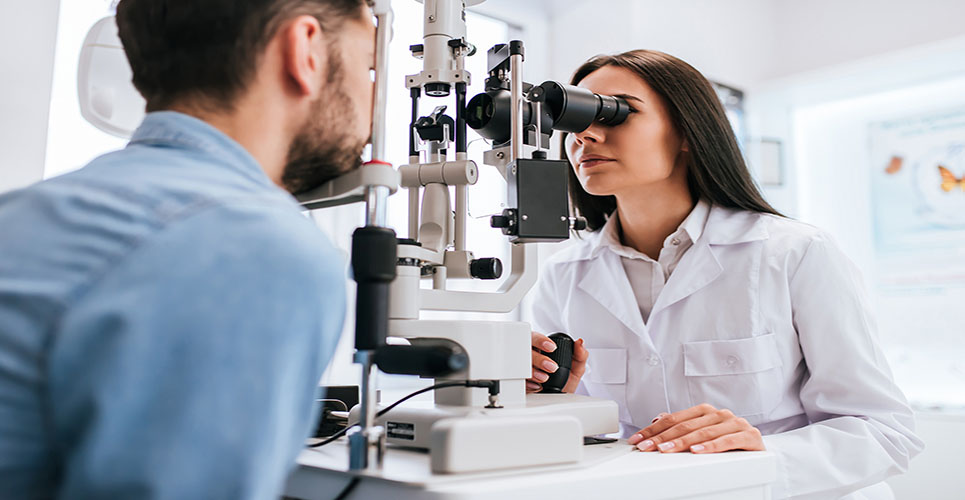teaser
Novartis has reported that new data with the eye drug Lucentis® (ranibizumab), first licensed in June 2006, is highlighted in a total of 209 abstracts at the 2013 Association for Research in Vision and Ophthalmology (ARVO) annual meeting this week.
This research across multiple retinal disease areas, including wet age-related macular degeneration (AMD), diabetic macular oedema (DME), retinal vein occlusion (RVO) and myopic choroidal neovascularisation (CNV), demonstrates that Lucentis with a wealth of real world long term experience is the pioneering anti-VEGF ocular treatment with its transformational efficacy, individualised treatment regimen, and well established long-term safety profile.
“Lucentis was designed to save sight and this is further demonstrated by the wealth of data in multiple disease areas reported at ARVO this week. In patients with myopic CNV average VA gains were 14 letters with an average of 3.6 injections,” said Dr Timothy Wright, Global Head Development, Novartis Pharma AG. “Real world evidence shows a lower number of injections and clinic visits than in the original studies with Lucentis, whilst achieving an over 50% reduction of blindness due to wet AMD.”
Lucentis ARVO highlights include:
Real world evidence in wet AMD: One study looked at how Lucentis treatment impacted the rates of legal blindness secondary to wet AMD in Scotland, UK. Blind registration data from the Royal National Institute for the Blind was retrospectively analysed. It was reported that since the commencement of treatment with Lucentis there was a 59% reduction in the incidence rate of legal blindness attributable to wet AMD. The mean number of clinic visits decreased by year, with 9.0 in year one, 5.8 in year two, 4.8 in year three, 2.3 in year four and 0.5 in year five; the average number of injections was 9.7 spread over five years. This study highlights how the transformational efficacy of Lucentis translates into clinical real-world practice.[1] [Oral session 118]
DME: The response rates were evaluated in patients with DME in the RESTORE trial. Patients were treated with Lucentis 0.5mg (monotherapy or combined with laser) or laser alone for a duration of 12 months, at 12 months all patients were eligible for Lucentis 0.5mg as-needed and the study was extended to 36 months. The patients who responded better to Lucentis treatment were the ones who were more recently diagnosed with DME, highlighting the need for prompt therapy.[2] [Poster session 290]
Myopic CNV: In the prospective, multicentre trial of Lucentis in myopic CNV patients, the REPAIR study, the primary endpoint was the mean gain in letters from baseline visual acuity at 12 months. At month 12 the mean visual acuity gain was 13.8 letters, this was achieved with a low number of injections to month 12 (mean 3.6, median 3) with 21% patients requiring only the one baseline treatment.[3] [Poster session 314]
Safety profile of Lucentis: In the largest comprehensive evaluation of Lucentis safety data to date, a meta-analysis examining the systemic safety profile of Lucentis across 22 studies and 10,300 patients, the safety profile of was reported to be consistent with that from individual randomized, controlled clinical trials.[4] [Poster session 234]
LUMINOUS, a five-year, global, prospective, observational, long-term study to evaluate the safety and effectiveness of Lucentis 0.5mg across its licensed indications is being conducted. This global study, approximately 500 centers in 34 countries worldwide, aims to enrol 30,000 patients. The baseline characteristics of the first cohort of patients enrolled were as expected and are representative of patients from a real-world setting.[5] [Poster session 375]
References
- Cackett P et al. Intravitreal ranibizumab treatment of wet macular degeneration in SE Scotland – effect on blindness rates and 5 year follow up data. ARVO 2013.
- Mitchell P and Chong V. Baseline predictors of 3-year responses to ranibizumab and laser photocoagulation therapy in patients with visual impairment due to diabetic macular edema (DME): the RESTORE study. ARVO 2013.
- Yang Y. The REPAIR study: Prospective, multi-center trial of ranibizumab in choroidal neovascularization due to pathological myopia – the 12 month primary endpoint. ARVO 2013.
- Avery R et al. Meta-analysis examining the systemic safety profile of intravitreal ranibizumab injections in AMD, RVO and DME. ARVO 2013.
- Brand C. LUMINOUS: baseline characteristics of the first cohort of patients treated with ranibizumab 0.5 mg in routine clinical practice. ARVO 2013.

